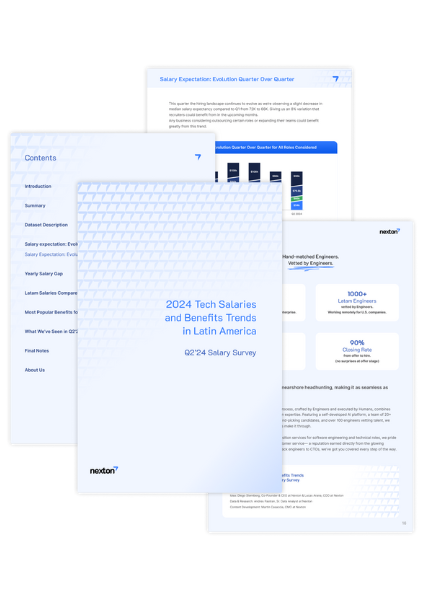Let’s say you are working on a new product. Or it is not new, but you’ve found that there is something that is not performing as expected. And you want to work to improve that. You can’t solve a problem if you know anything about it. So the first thing you and your team do is to gather information about this project. You’ve analyzed your product metrics. You’ve checked what your product market and competitors are doing. You’ve made some heuristic analysis. Also, you’ve interviewed the stakeholders -to gain information about the business- and users (existing or potential) to understand their needs.
You’ve got here this way with a lot of qualitative and quantitative data that you already analyzed and transformed in key insights. Congratulations! You have a design challenge that needs to be solved and this will lead you into the next stage: to do something good about it :).
Now what?
You’ve reached the next station: Ideation.
This is the third stage of the Design Thinking process, and its objective is to find an innovative solution to the problem that you’ve defined during the research stage.
“Ideate is the mode of the design process in which you concentrate on idea generation. Mentally it represents a process of “going wide” in terms of concepts and outcomes. Ideation provides both the fuel and also the source material for building prototypes and getting innovative solutions into the hands of your users.” An Introduction to Design Thinking — Process Guide. Hasso Plattner. Institute of Design at Stanford.
During this phase, the team needs to explore broadly, to experiment in order to generate as many ideas as possible -as fast as possible-. The objective is to consider as many alternative solutions to the problem as possible, always focusing on the user needs and not in the idea viability. We are going to work on that in the future. We are not looking for a perfect idea now, just to have a few ones that we can polish later.
Ideation needs to be judgment-free and needs diversity to be a rich experience. There doesn’t exist any “bad idea” within this context. Diverse voices and perspectives will lead to more diverse -and creative- ideas.
(Bonus: working collaboratively on innovation will lead to stronger bonds between the team.)
But ideation is not something that just happens. Innovative ideas need stimulation to emerge and organization to stay focused. And that’s what we need for a successful ideation session: a broad set of innovative ideas focused on the solution we are aiming for. The facilitator role is key to that outcome.
The facilitator role
Every collaborative session or workshop must have a facilitator, and it can be part of the team or external. This person will guide the ideation process through different techniques and will work on keeping everyone on track and open-minded.
During an ideation workshop, the facilitator will start the session with a short open statement and make some “ice-breaking” in order to put all the participants in a relaxed and collaborative mood. Also, he/she needs to frame the problem that we need to solve, to give an overview of the session agenda, and very important: remembering all the participants that every idea counts.
Let the game begin
The ideation process will be supported on several techniques that will work as provocations of every team member’s creativity. These different techniques will generate a situation where the participants will need to think beyond the obvious and explore unexpected paths. They will need to adapt, connect and experiment. They will need to move from this usual position to start looking at things from another angle. Thay will need to break with what they already know to find new ways to do things. Sounds fun, right?
Today, you can find hundreds of techniques that will help you to structure your ideation workshop. There are so many that it can be hard to decide which one is the best for your team. Here you’ll get a list of the five techniques that worked for me and why they are good to share.
Storyboarding
Storyboarding involves developing a visual story related to a problem. It allows us to explore the problem in-depth and come up with potential solutions by using the narrative.
We are not expecting perfect drawn Storyboards, they only have to display a meaningful sequence of events. It will help the team visualize how people will experience the new idea in action. It’s easy if you first write quickly every step of the story and then move it to the storyboard frame adding it some context and emotions. If you have the chance, use the comic book tools to emphasize important moments (layout, close-ups, balloons, etc) Be sure that the outcome of the story is very clear for all the participants.
Brainstorming
This technique asks participants to come up with all kinds of ideas, from simple to wild. Some of these thoughts and ideas will evolve into original and creative solutions to problems or help to ignite additional ideas. To perform the brainstorming UX ideation technique, you can start by presenting the problem you want to solve and describing the objectives of a possible solution. Then, invite the team to generate possible solutions individually and later bring everyone together to share. An important thing to have in mind: you must not criticize or reward any participant idea since it will help the flow of ideas and avoids stunted idea generation.
Prototyping
Prototyping can be a powerful ideation technique too. You will be rapidly sketching your ideas in a visual way, and that’s a great way for the team to envision your idea. This will allow everyone to have a clear picture of it and discussion about it will be richer.
To keep things light and agile we recommend to do it quick and low fidelity, just the basics to be able to show how everything works. Don’t get too attached to it. Remember this is an igniter of further discussion and solutions will be polished and build in the next stages.
Opposite Thinking
Opposite thinking its a technique that will help the team challenge their assumptions about the problem and its possible solutions, and this challenge will lead to the generation of non-obvious ideas. It’s a very useful technique when you have run out of ideas.
Invite each member to list 2 assumptions they have about the problem you need to solve. Share them with the team and let all the participants pick an assumption to work with. Everyone must define one or two opposite realities for that assumption. Challenge them, examine the words we use, the qualifiers, ask why the assumption exists in the first place. Then, think about how these new realities affect your problem and define potential new solutions for it.
Review all proposed solutions collectively, discuss and build on each other ideas!
SCAMPER
Scamper is an acronym for seven thinking techniques: Substitute, Combine, Adapt, Modify, Put to another use, Eliminate and Reverse. You can choose one, or all of them to generate new ideas about the problem you are trying to solve. Eg: Substitute: Find a part of your product, process, idea, that you can replace with another and see what happens, it will help you to consider alternatives to get to your objective.
This is an excellent way to train the mind to confront the already known with new questions.
Once the ideation session is over, the resulting ideas must be collected and organized in a way that allows the team to select most promising to keep working on them. The team can vote for the ones that think more promising or organize them per category or affinity.
Don’t forget creativity is a muscle that needs to be trained constantly. It’s a good habit to push yourself and your team to go a little further on an innovation mindset. Try these techniques with your team or explore others that you find interesting. Challenge yourself to dive into new ideas often since they are the first step into the innovation road.


